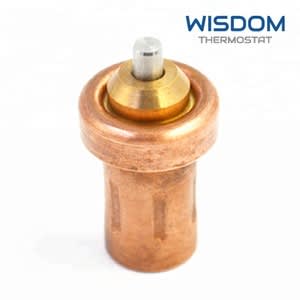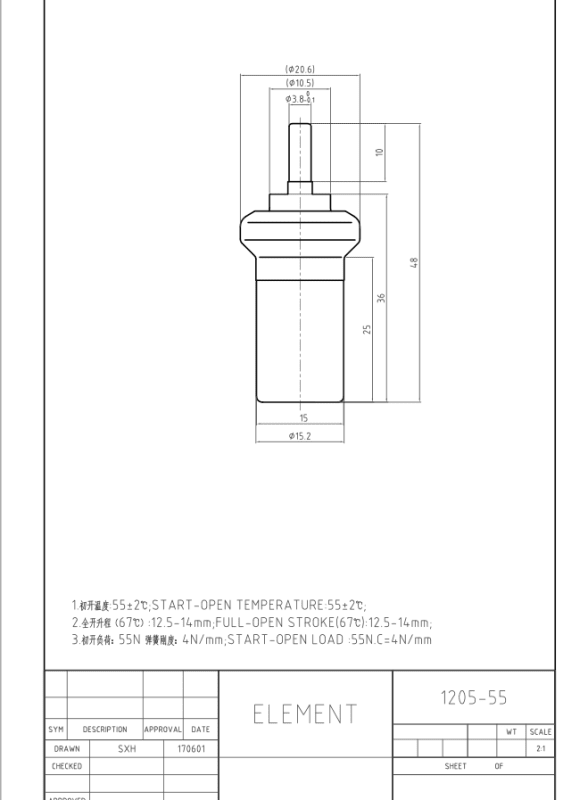jnelson33
Mechanical
- Mar 7, 2018
- 51
Hello all! We have samples of a new wax thermostat we are looking to integrate into our product line and I believe it would be wise to test these separately (outside of the products they are to be used in) prior to them being implemented. We also test customer products and would sometimes need to determine when a wax thermostat is bad for a warranty claim. The wax thermostat is similar to pic provided here.

This has to be simple and cheap as my boss loathes testing anything, especially components from overseas, even if these thermostats are being installed in paramount applications, even when this system will be useful for faster warranty claims. We are given a sheet like is provided here. I want to validate their preload suggestion and thermostat activation at 55C, or whatever temperature we are testing.

I am thinking about a simple system that uses 2 plates, 3 rods, a spring and a heated container. I will also design and laser mark what is essentially a ruler / scale to see if the suggested preload and suggested springs equate to the force outputs.

This of course means I need to do some spring selection work so that it's reliable, but does the concept seem to be simple and effective enough? Has anyone done this for their job at one point and can lend a helping hand? Does anyone have a simpler suggestion for testing this type of product?

This has to be simple and cheap as my boss loathes testing anything, especially components from overseas, even if these thermostats are being installed in paramount applications, even when this system will be useful for faster warranty claims. We are given a sheet like is provided here. I want to validate their preload suggestion and thermostat activation at 55C, or whatever temperature we are testing.

I am thinking about a simple system that uses 2 plates, 3 rods, a spring and a heated container. I will also design and laser mark what is essentially a ruler / scale to see if the suggested preload and suggested springs equate to the force outputs.

This of course means I need to do some spring selection work so that it's reliable, but does the concept seem to be simple and effective enough? Has anyone done this for their job at one point and can lend a helping hand? Does anyone have a simpler suggestion for testing this type of product?
